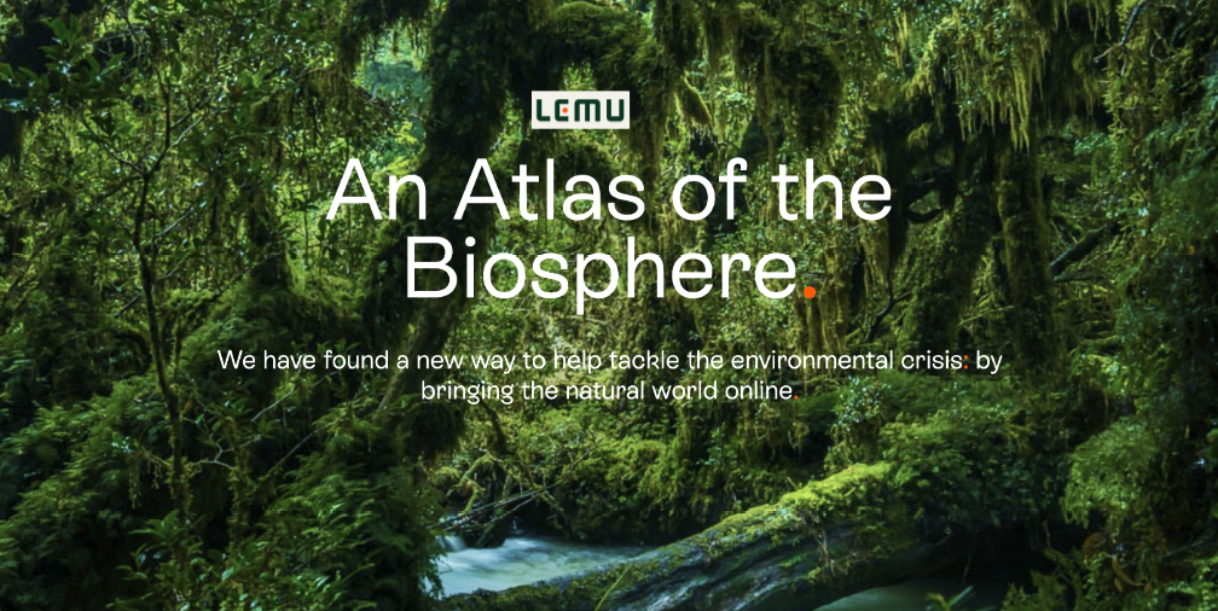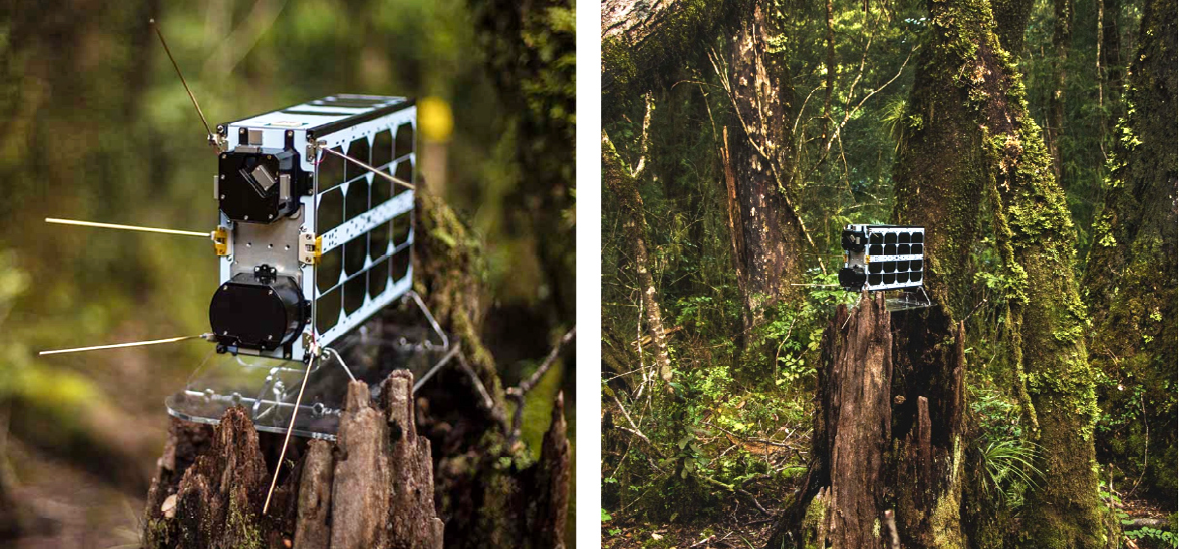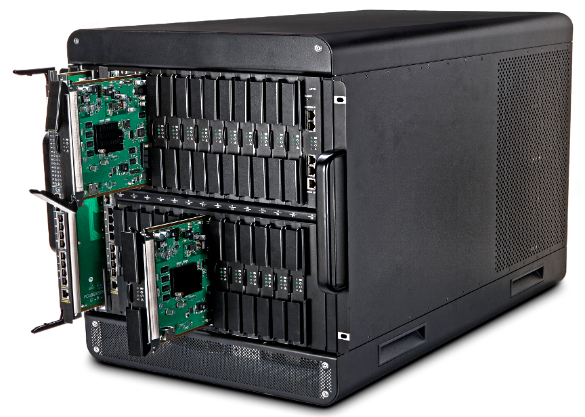NanoAvionics To Build Biodiversity Smallsat For Lemu
NanoAvionics recently received a contract for a biodiversity observation satellite mission from Lemu, a startup building an atlas of Earth’s biosphere to make conservation the best investment possible.

Essential to the biosphere atlas is “Lemu Nge” (Forest Eye in the Mapudungun language), Chile’s first private satellite, which is designed to observe all 51 billion hectares of Earth’s surface biodiversity. Built by NanoAvionics in Lithuania, the 6U smallsat will collect hyperspectral imaging data that will help Lemu to identify, measure and track the value that each ecosystem generates each and every day.
Lemu Nge will start with measuring and tracking the value of the world’s forests, which cover about four billion hectares, or 31 percent of the Earth’s land surface. Flying in SSO, with revisit rates from one to seven days for the same region, the smallsat will provide geospatial images for Lemu’s biosphere atlas. Once the mission is completed, an onboard propulsion system, using a liquid metal ion thruster, is designed to allow the smallsat to safely deorbit, leaving no space debris behind. The launch of Lemu Nge is planned to be aboard a SpaceX Falcon 9 in 2023.
From the obtained geospatial data, supported by satellites from NASA and ESA as well as ethical-AI, Lemu is able to analyze, measure and evaluate information about ecosystems, starting with the world’s forests. Lemu then assigns a value for each ecosystem, a Lemu Index.
The analyzed results will be critical in helping Lemu as it seeks to reduce deforestation and degradation of ecosystems. It will also aim to increase the success of reforestation and restoration efforts, improving Lemu’s ability to precisely measure carbon sequestration and other nature-based solutions. The biodiversity atlas will be open to anyone who wants to participate and contribute, including other organizations and people in the nature conservation community worldwide.
The key instrument of Lemu Nge satellite is a high-resolution, hyperspectral camera supplied by Simera from South Africa. Supported by the Lemu’s artificial vision, it allows to segment land cover and vegetation biodiversity in unusual detail, more than 20x the current resolution.

The camera is capable of measuring 32 spectral bands with wavelengths between 450 to 900 nanometers (the human eye sees wavelengths from 400 nm to 700 nm). Its ground sampling distance (GSD), the distance between pixel centers measured on the ground, has a resolution of 4.75 meters. The satellite is expected to complete one orbit around the Earth every 90 minutes, resulting in 14 orbits each day.

The Lemu Nge smallsat.
Leo Prieto, founder and CEO of Lemu, said, “To revert the global environmental crises we need to increase and succeed with conservation efforts across the world. Through Lemu, we are using the most advanced technologies available to demonstrate that conservation and ecosystem restoration are the best investment possible — and not a philanthropic effort. Each cent invested in conservation generates a considerable return on investment from the nature-based solutions that are produced, and today we have the tools to measure and visibilize that. Deep ecology requires deep technology, that is why this mission is a critical piece of our ‘Space to Soil’ strategy allowing us to accelerate the generation of information that will take us from degradation to restoration.”
Vytenis J. Buzas, CEO NanoAvionics, said, “The effects of climate change affect us all and we need to make every effort to turn things for the better. I’m very proud that NanoAvionics supports, and with our small satellite technology, enables Lemu’s efforts to improve humanity’s understanding of our biodiversity, allowing research organisations, companies and individuals to develop new solutions to counter the effects of deforestation and restore ecosystems. As a leading nanosatellite provider partner with extensive experience in integrating remote sensing payloads, NanoAvionics is the ideal go-to mission partner for organizations like Lemu, wanting to obtain relevant data sets from Earth. observation.”
EO Firm Satellogic To Acquire Million$$$ In Investment + Will Go Public

Satellogic specializes in high-resolution imagery of the Earth’s surface obtained through a constellation of LEO satellites. Liberty’s contemplated investment brings the total capital raised to more than $265 million, net of expected redemptions of CFV stock, and including a $100 million combined investment led by SoftBank and Cantor Fitzgerald, among other top-tier institutional investors. This will be Liberty Strategic Capital’s third investment since the company’s founding.

CFV was formed as a “blank check” company in January of 2020 and completed an IPO in February of 2021 at a price of $10 per unit. In July 2021, CFV and Satellogic announced plans to merge at an implied enterprise value of $850 million. The stockholder vote of CFV to approve the proposed merger is currently scheduled for January 24, 2022.
In exchange for this investment, Liberty will receive 20,000,000 Class A ordinary shares of Satellogic at $7.50 per share, as well as 5,000,000 warrants with a strike price of $10 per share and 15,000,000 warrants with a strike price of $15 per share. Upon closing, Satellogic’s Class A ordinary shares are expected to be listed on NASDAQ under the ticker symbol “SATL.”
Satellogic is a provider of low-cost, sub-meter satellite imagery to governments and commercial customers worldwide with plans to remap the entirety of the Earth’s surface once each day. Legacy approaches to Earth imaging have depended on large, complex satellites that were expensive to manufacture and launch, making it difficult for users to obtain imagery quickly and cheaply. Satellogic has developed a differentiated, highly efficient small satellite network that promises to unlock access to near real-time, high-resolution imagery for a multitude of users, helping businesses to farm more efficiently, monitor oil pipelines for leaks, and manage forest replantings, among other uses.
In connection with Liberty’s investment in Satellogic, Liberty will secure two board seats. Secretary Mnuchin will join Satellogic’s Board of Directors as Non-Executive Chairman. Liberty’s investment is contingent upon the completion of CFV’s merger with Satellogic and is further subject to a waiting period under the Hart-Scott-Rodino Act.
Arianespace Selected By EUSPA To Launch 8 New Galileo Satellites
The European Union Agency for the Space Program (EUSPA) has selected Arianespace to launch four new Galileo satellites for Europe’s own satellite navigation system. With this order, EUSPA takes over the role of placing launch services contracts for Galileo from ESA, which acted so far in the name and on behalf of the European Commission and will continue to be the technical authority for these launches.

This order follows European Space Agency’s (ESA) order for the launch of four satellites in October 2021, and will complete the deployment of first- generation Galileo satellites.
These launches will take place from the Guiana Space Center (CSG), Europe’s Spaceport in Kourou, French Guiana. After a first launch this year for Galileo, carrying satellites from a previous order, in the first half of 2022, a second Soyuz launch in 2022 will orbit the first two satellites from this latest order.
The next three missions will orbit two satellites each on Ariane 62, in 2023, 2024 and 2025.
Each of the eight satellites under this order, built by OHB System AG in Bremen, Germany, will weigh less than 730 kg. They will join the 28 Galileo satellites already deployed to date, as well as the two to be orbited in early 2022 from the Guiana Space Center by Arianespace.
“I would like to thank ESA and EUSPA, along with the European Commission for continuing to entrust us with their satellites,” said Stéphane Israël, CEO of Arianespace. “We’re very proud to once again be helping EU deploy its own global navigation satellite system. This additional order to the service of Galileo once again confirms Arianespace’s assigned mission of ensuring reliable access to space for Europe.”
LeoStella LEO-100 Smallsat Buses Ordered By Loft Orbital Solutions
Loft Orbital Solutions, Inc. and LeoStella, Inc. have extended their production agreement to secure multiple additional LEO- 100 buses from LeoStella. These satellite buses are the latest in a series Loft Orbital has secured from LeoStella.


The satellites are based on LeoStella’s existing product line of ESPA-class buses. LeoStella’s active production line of commercial buses creates an opportunity for customers to acquire high-quality satellites while staying within new-space cost and schedule constraints. This procurement exemplifies Loft Orbital’s novel strategy of using commercial-off-the-shelf (COTS) satellite buses to fly any kind of payload in LEO at unparalleled speed to orbit and reliability. This partnership is a crucial enabler for Loft Orbital’s focus on making space simple.
Loft Orbital operates satellite infrastructure and flies customer payloads as a service. By using common bus designs across its missions, Loft Orbital shields its customers from the technical and schedule risks that typically impact space missions.

LeoStella’s continuous manufacturing model enables the company to produce commercial satellites at scale. The company’s intelligent manufacturing facility uses a digital process tethered to a robust supply chain to make satellite production more flexible and efficient. Its Tukwila, Wash., factory is designed to maximize efficiency while remaining scalable to keep pace with the rapidly accelerating market demand.
“We chose to procure these additional buses from LeoStella given the excellent performance of its LEO-100 satellite bus, which we used for our YAM-3 mission that launched earlier this year, and YAM-5, which is launching in 2022,” said Pierre- Damien Vaujour, CEO of Loft Orbital. “Our strategy has been to partner with best-in-class bus providers with significant on-orbit heritage and active production lines. We focus our efforts on the hardware and software products that enable us to treat these buses as payload agnostic platforms, allowing us to fly any payload onboard and provide our customers a high degree of operational control.”
“Our COTS buses provide industry-leading data quality, throughput, and up- time as demonstrated on-orbit across multiple operational constellations,” said Brian Rider, chief technology officer at LeoStella. “LeoStella has a continuous production line of satellites that we can repurpose for a wide range of missions. This approach aligns well with Loft Orbital’s focus on offering its customers fast and reliable access to space. We are excited to be part of that ecosystem.”
More Gilat Satellite Network VSATs Ordered By Tier-1 Mobile Network Carrier In Japan
Gilat Satellite Networks Ltd. (Nasdaq: GILT, TASE: GILT has received an order for additional VSATs from the firm’s Tier-1 mobile network carrier customer in Japan.

Using Gilat’s unique SkyEdge II-c cellular backhaul system, the mobile network carrier will be expanding their cellular backhaul over satellite. This will enable further growth of their 4G/LTE network into rural zones that are lacking fiber access.

Photo of Gilat Satellite Network’s SkyEdge
II-c cell backhaul system, courtesy
of the company.
Photo of Gilat Satellite Network’s SkyEdge II-c cell backhaul system, courtesy of the company.
“This additional order is a vote of confidence and a testament to the quality and effectiveness of our cellular backhaul over satellite solution,” said Michal Aharonov, Chief Commercial Officer at Gilat. “As a flexible and modular platform, SkyEdge II-c can readily support the advanced features present in the operator’s open architecture. With technology that enables timely deployment for network extension, Gilat is helping to create a dynamic that massively benefits the local population, as well as setting an enviable example of implementation that can be used by similar MNOs in other countries.”



